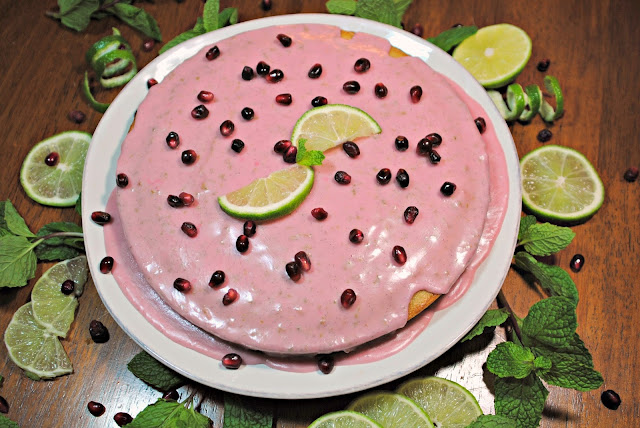 |
| Au naturale |
 |
| A piece of cake |
If you're not familiar, I'll provide crib notes: Persephone (goddess of flowers) was the daughter of Demeter (goddess of grain). Persephone was so beautiful that when Hades (god of the underworld) saw her, he abducted her to his subterranean kingdom to force her to be his wife (gross). Demeter was so disconsolate over the loss of her daughter, she allowed all plant life to wither in her sorrow. Worried that humanity would starve, leaving no one to worship the gods, Zeus (god of the sky), sought to intervene. He demanded Persephone's release, but tricksy Hades persuaded Persephone to eat six pomegranate seeds, knowing that those who eat the food of the underworld must always remain there. Since Zeus was king of the Olympian gods, and it's good to be the king, a compromise was reached: Persephone would remain with Hades for six months of the year, one for each pomegranate seed she ate, and be free to return to her mother the remainder. This myth explained the cycle of the seasons and why Spring arrives in a profusion of flowers, only to wither and die with the Autumn.
 |
| Seasonal produce |
 |
| Ready for nomming |
The obsession with room-temperature ingredients in much of baking is centered around the readiness of warmer molecules to blend together and the specific texture of softened butter, dairy, or oil products and their ability to capture air and, subsequently, other ingredients. Slowly coming to temp over a few hours on the counter is ideal, but you can quickly soften butter in the microwave with 10-second pulses and take the chill off eggs and (sealed) yogurt by placing them in a warm water bath. Serves about 12.
For the cake:
1 1/2 cups cake flour
1 1/2 teaspoons baking powder
1/2 teaspoon sea salt, finely ground
1 scant cup granulated sugar
1/2 cup (1 stick) butter, room temperature
2 large eggs, room temperature
1/2 cup pomegranate juice (100%, unsweetened)
1/2 lime, freshly zested
1 vanilla bean, sliced and seeded (or 1 tablespoon vanilla paste or extract)
1 tablespoon lime juice, freshly squeezed
5 ounces full-fat plain Greek yogurt or cream skyr
For the glaze:
1 1/2 cups powdered sugar
1/4 cup pomegranate juice (100%, unsweetened)
1/2 lime, freshly zested
1 vanilla bean, sliced and seeded (or 1 tablespoon vanilla paste or extract)
For garnish:
2/3 cup fresh pomegranate arils
Fresh lime zest
Preheat an oven to 350°F and butter a deep 9-inch cake pan, lining the bottom with a round of buttered parchment.
Sift together flour, baking powder, and salt in medium bowl.
 |
| Pictured: whiteness |
Beat in pomegranate juice, lime zest, and lime juice. Whisk in the yogurt (mixture will look grossly curdled). Beat the flour mixture into batter just until blended and smoothed back out.
 |
| Smoothed |
 |
| Pouring it out |
Turn the cake out onto a serving plate and use a fork or wooden skewer to poke holes over the top of cooled cake, spacing them roughly 1 inch apart (less space/more holes for a skewer). Slowly drizzle the glaze over the top of the cake and allow to spread evenly
 |
| Chance of drizzle |
 |
| Cheers! |

No comments:
Post a Comment